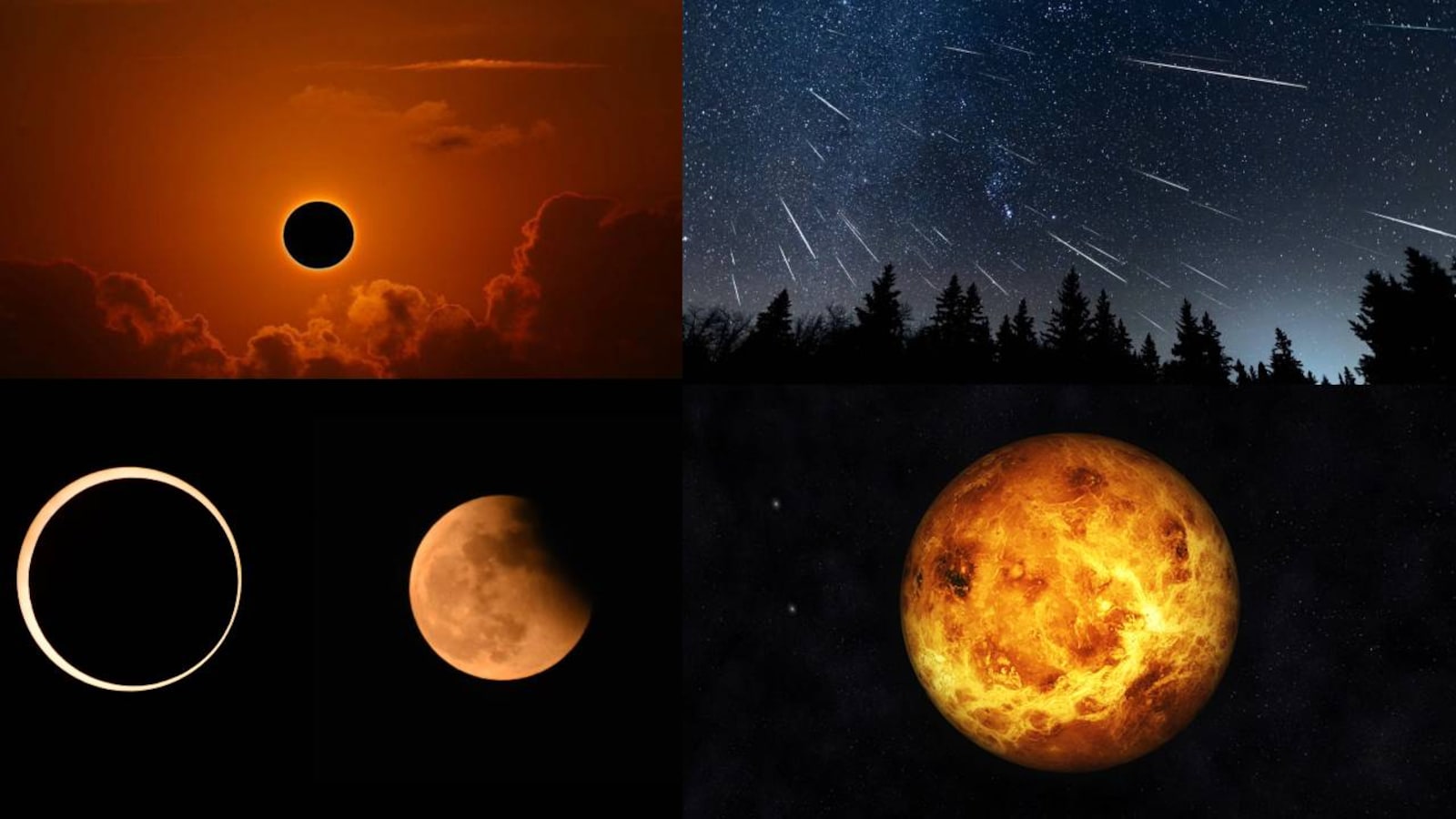
Hello, space enthusiasts! Welcome back to our channel. This year is packed with spectacular celestial events that you won’t want to miss. From meteor showers to eclipses, here are ten must-see astronomical occurrences happening in 2024.
1. Lyrid Meteor Shower
April 15th to April 29th
The Lyrid Meteor Shower will grace our skies from April 15th to April 29th. This rare event can surprise viewers with as many as 100 meteors per hour under clear skies. Don’t miss the chance to witness this dazzling display.
2. Eta Aquarid Meteor Shower
April 15th to May 27th
Running from April 15th to May 27th, the Eta Aquarid Meteor Shower is known for its fast meteors, which can travel at about 148,000 miles per hour into Earth’s atmosphere. These meteors leave long glowing trails, providing a stunning spectacle last observed in 1986.
3. Perseid Meteor Shower
July 14th to September 1st
The Perseid Meteor Shower will light up the skies from July 14th to September 1st. This event is known for its bright and frequent meteors, with rates of about 50 to 100 per hour. The Perseids were last prominently seen in 2021.
4. Super Blue Moon
August 31st
On August 31st, a Super Blue Moon will occur. During this event, the full moon will appear slightly larger and brighter than usual. This year, we’ll witness four supermoons, making for an impressive lunar display.
5. Orionid Meteor Shower
September 26th to November 22nd
From September 26th to November 22nd, the Orionid Meteor Shower will be visible. While not as powerful as the Perseids or Geminids, the Orionids are still a spectacle worth observing. At its peak around October 22nd, viewers can witness around 10 to 20 meteors per hour from a dark area.
6. Annular Solar Eclipse
October 14th
An annular solar eclipse will occur on October 14th. This eclipse will be observable from the southwestern United States. Unlike a total eclipse, the moon will not completely obscure the sun, allowing viewers to see a bright ring of light, known as the “ring of fire.” This event can last up to 12 minutes and 30 seconds.
7. Partial Lunar Eclipse
October 28th
On October 28th, a partial lunar eclipse will be visible. Unlike last year’s total lunar eclipses, this partial eclipse occurs when the moon only partially passes through Earth’s dark shadow (umbra). The penumbral lunar eclipse, a more subtle event, will be visible from the East Coast of the United States. The partial eclipse will begin at 3:35 PM EDT and end at 4:52 PM EDT.
8. Geminid Meteor Shower
November 19th to December 24th
The Geminid Meteor Shower, one of the most anticipated meteor showers of the year, will be visible from November 19th to December 24th. Known for its fast-moving meteors, which can travel at speeds of 78,000 miles per hour, the Geminids offer a spectacular end to the year’s celestial events.
9. Venus-Jupiter Conjunction
March 1st
On March 1st, look up to witness the Venus-Jupiter conjunction. In astronomy, a conjunction occurs when a planet appears close to the moon, another planet, or a star. Although common and not of significant astronomical importance, conjunctions like these are a delightful sight to observe.
10. Comet C/2022 E3 (ZTF)
February 2nd
On February 2nd, Comet C/2022 E3 (ZTF) will make its closest approach to Earth at approximately 26.4 million miles away. This is the closest the comet has come to our planet since Homo sapiens began migrating from Africa to settle in Europe and Asia. Don’t miss this historic visit!
Mark your calendars and prepare your telescopes and binoculars to enjoy these amazing celestial events. Stay tuned for more updates and tips on how to best view these wonders of the night sky!



GIPHY App Key not set. Please check settings